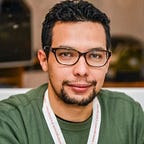ATLAS Open Data & Venezuela:
two cases on how the Open Access culture boosts worldwide outreach in HEP
Venezuela, a country that will be mentioned several times in this story. The main characters and the successes we would like to share in this post come from this country. Also, we will talk about Open Access and Open Source. And in general, how the openness of many scientific endeavours and their members, including the ATLAS Collaboration, has been boosting and expanding education programs. Particularly, the education of students and researchers in High Energy Physics (HEP) and their related Big Data analysis technologies and abilities around the World.
So, how this story of openness and education starts? Well, the ATLAS Collaboration -or their members, better say- has a fructiferous tale regarding Outreach activities. Since the very beginning of the experiment, their members devote hours, days, weeks and months teaching HEP to anyone who has the will to listen to them! With the same spirit, the ATLAS Open Data project was developed to release datasets and essential educational resources to help on those activities carrying up for members and non-members.
Except for small previous collections of data, since 2016 the ATLAS Open Data project is delivering public -or “Open”- data recorded by the ATLAS experiment, together with useful simulated data. Along with them, it was released several educational resources, documentation and support, plus analysis software that relies on other very well known Open Source projects like ROOT at CERN. Some of those using Open Source Linux-based operating systems, among others.
The fact that those data samples and resources are Open Access allows their reuse -and enhance- by non-members. And that is what this group of ATLAS members, professors and students in Venezuelan universities are doing since several years ago.
We use those resources to teach and to develop university theses in HEP. And while doing that, we reinforced an international community on both sides of the Atlantic Ocean.
However, who are “we”?
Let’s start with Iskya Garcia that in her own words:
“I am a Venezuelan researcher, who obtained her degree in physics at the Universidad Central of Venezuela (UCV) with a thesis framed in LAGO Collaboration at the Pierre Auger Observatory located in Argentina. As part of the team that developed a water Cherenkov Detector for the study of Gamma Ray Bursts. Instrumentation located in the Universidad Simón Bolívar. Then I earned a Master in Physics at the same UCV, with a HEP work developed between 2015 and 2017, under Arturo Sánchez’s supervision. The main subject was the development of cut-and-count analyses for the search of Dark Matter (DM) candidates using reconstructed objects so-called jets, which are produced due to the presence of quarks, gluons and bosons after the proton-proton collisions at the LHC. “
“The main analyses were performed using open data published by the ATLAS collaboration in 2016, collected during 2012. It corresponds to a total integrated luminosity of 1 fb-1, where a pair of protons were collided with a centre of mass energy equal to √s = 8 TeV, using analysis platform created by ATLAS to handle this data. As a result, no excess events were observed above the predictions of SM in any of the final states studied, rejecting the presence of events from new physics, which is in line with official results of the ATLAS Collaboration for such DM searches in that range of energies.”
Iskya worked simulating other DM candidates using Open Sources HEP software like Pythia and Delphes. Currently, she develops her professional activities in Argentina, where she is living since several years ago. In fact, the defence of her Master thesis was a novelty itself: Thanks to free communication tools via Internet, Iskya was able to present her thesis from Argentina, while the jury qualifier was in Caracas and her supervisor in Geneva.
The other successful case is the undergraduate thesis in physics of Maria Di Domenico:
“In my thesis, we studied and produced a set of analysis with the end of reconstructing the invariant masses of the W, Z and Higgs bosons. Together with other physical variables and following the rules of the Standard Model. These analyses were produced using proton-proton collision data collected by ATLAS Experiment in 2012 and release to the public in 2016. One of the fundamentals of this work is that it was performed using a cloud computing platform called SWAN, also developed and localised at CERN. SWAN is based on Jupyter notebooks (an Open Source web-based technology) and ROOT. The final product: a set of self-explained notebooks showing the physics and the programming elements that are needed to do such reconstructions on analysis of cut-and-count type. Finally, these notebooks will be used as educative resources for teaching and outreach of HEP at the university level in the ATLAS Open Data portal.”
She was a UCV’s student as well. Now Maria -a CMS’s PhD candidate!- is living in Pisa, Italy. Ah! And if you wonder, this time, we all -student, jury and supervisors- were present for Maria’s defence in the physics department of the UCV, last October 2017.
Two beautiful stories of collaboration and passion that remind us the importance of sharing knowledge and resources worldwide.
We continue following this path of openness, already working with new students here and there.
We cannot conclude this story without sharing their final products, and this is why both thesis documents (Maria’s & Iskya’s) are available in the CERN Document Server -or CDS- another Open Access publication platform hosted at CERN.
